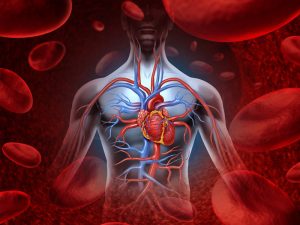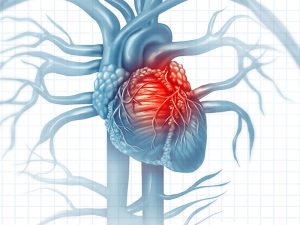Advance cardiovascular disease research with high-plex protein profiling for biomarker discovery
Interrogate thousands of proteins from a 55-µL sample to identify novel protein signatures.
Discover relevant biomarkers related to cardiac health and disease for prevention, diagnostics, and drug development
Cardiovascular disease (CVD) is the leading cause of mortality worldwide. Identifying novel and early-stage biomarkers is important in predicting and preventing the significant morbidity and mortality associated with CVD. High-content analysis of the human plasma proteome is facilitating the possibility for novel biomarker discoveries. This, combined with increasing capacity for analysis of large data sets, opens a world of possibilities for improving cardiovascular care with a more personalized medicine approach.

Profiling technology unlocks the predictive power of proteomics
Featuring:
Peter Ganz, MD University of California, San Francisco
Ali Javaheri, MD Washington University in St. Louis
Yuichi Shimada, MD Columbia University
“From a single blood sample, one can simultaneously determine the risk of many diseases.”

A proteomic surrogate for cardiovascular outcomes that is sensitive to multiple mechanisms of change in risk
Researchers measured about 5,000 proteins in plasma samples from 22,849 participants in nine clinical studies. They used machine learning to derive a 27-protein model predicting 4-year likelihood of myocardial infarction, stroke, heart failure, or death.
“The 27-protein model has potential as a ‘universal’ surrogate end point for cardiovascular risk.”
Look deeper with the SomaScan Platform

Multiplex, high-throughput proteomics
Profile 11,000 protein measurements per sample and conduct high-throughput analysis of >1,000 samples simultaneously.

Sensitive detection
Detect and quantify a wide dynamic range of proteins (from fmol – μmol) in complex sample types, such as serum and plasma.

Reproducible
Obtain consistent and reproducible inter- and intraassay results for data analysis and comparison.
Advanced proteomics offerings in cardiovascular disease (CVD)
The SomaScan Platform is available in multiple formats, each providing unique data outputs to fast-track your CVD research.
SomaScan Assay
With the ability to profile thousands of proteins simultaneously and in easily accessible samples, such as blood and urine, the SomaScan Assay is well suited to measuring low- and high-abundant proteins to identify CVD biomarkers.
SomaScan Panels
These custom panels can be individualized from our menu of 11,000 protein analytes. The assay is also offered as a cardiac panel focused on 953 CVD-relevant proteins, in addition to other curated panels for inflammation and metabolic diseases.
SomaSignal® Tests
Monitor clinical metrics including those associated with cardiovascular disease, such as body fat percentage, lean body mass, cardiorespiratory fitness, and heart failure-specific tests.
In one of the largest proteomics studies ever conducted, scientists from 18 organizations across the world used the SomaScan Assay to create and validate a 27-protein clinical test model that accurately predicted the 4-year likelihood of myocardial infarction, heart failure, stroke, or death. This model elucidated the underlying biology associated with clinical risk factors and has the potential for consideration as a “universal” surrogate endpoint for CVD risk. (A proteomic surrogate for cardiovascular outcomes that is sensitive to multiple mechanisms of change in risk | Science Translational Medicine)




